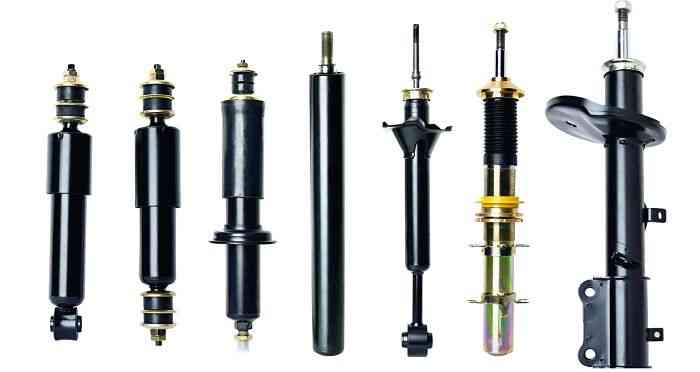
(Inner) spring shock absorbers - how does it work?
The main task of shock absorbers with (internal) springs is to dampen unwanted vibrations arising from surface irregularities during movement. In addition, and more importantly, shock absorbers contribute directly to driving safety by ensuring that the vehicle's wheels are always in contact with the ground. The designers are working to continuously improve their efficiency by installing, among other things, an internal return spring.

Against (dangerous) overloads
To understand the legitimacy of using internal springs, just look at the work of traditional shock absorbers in extreme driving situations. In the event of separation of the car's wheels from the surface, the suspension spring is stretched, thereby forcing the shock absorber piston rod to extend as much as possible. The movement of the latter is admittedly limited by the so-called stroke limiter, but the piston rod itself in such situations hits the guide with great force, which can lead to damage. To make matters worse, the shock's multi-lip oil seal can also be damaged, causing oil to leak and requiring the entire shock to be replaced.
To prevent the aforementioned damages, only specially designed rebound springs. How it works? The rebound spring is located inside the damper housing, it is fixed around the base of the piston rod. Its main task is to protect both the piston rod guide and the multi-lip oil seal from possible mechanical damage. This is achieved by mechanically equalizing the large forces and stresses resulting from the stroke of the shock absorber piston rod by limiting the full extension of the piston rod from the shock absorber body.
Moreover, the application rebound springs provides better vehicle stability when cornering the road. How? An additional spring provides additional resistance to the shock absorber rod at moments of increased body tilt, which directly contributes to increased safety and driving comfort.
How to serve?
When disassembling the shock absorber, it is not possible to check whether it is equipped with an additional internal return spring. Therefore, before starting operation, a special retainer should be placed on the shock absorber piston rod to prevent the development of dangerous stresses (recoil). Similarly, when installing a new shock absorber with an additional spring, it is necessary to use a specialized tool that has, among other things, a special lock with a Teflon insert that protects the chrome-plated surface of the shock absorber rod from damage during its service lock.
Added by: 3 years ago,
a photo: AutoCenter
